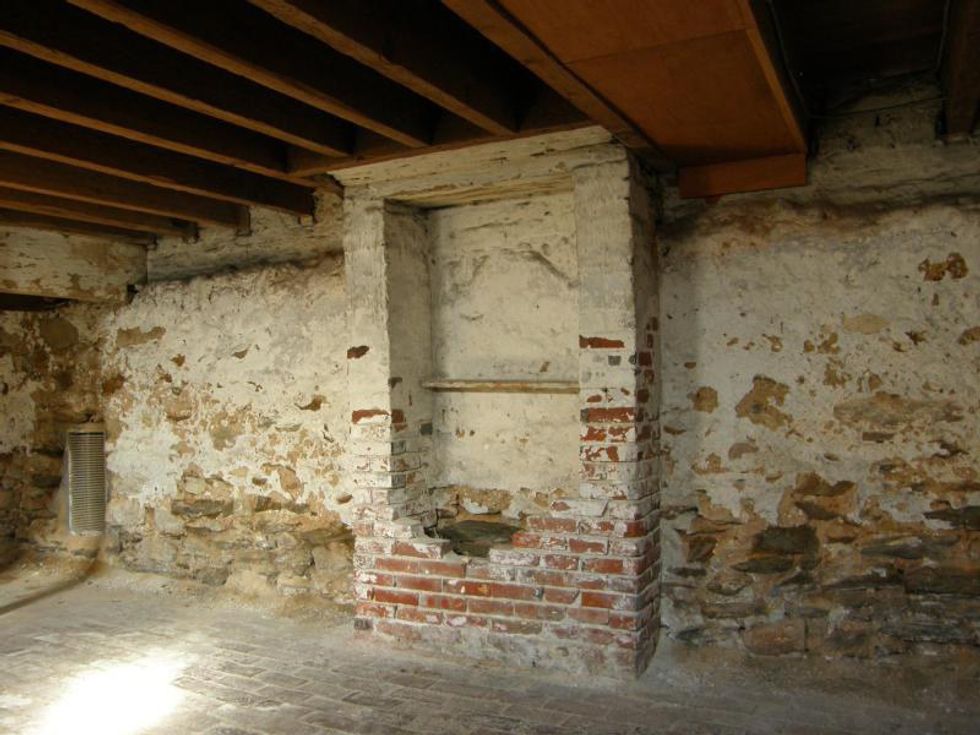It's a well-known fact that Philadelphia is famous for many things. It is the birthplace of Independence, and home to great revolutionaries such as Benjamin Franklin. It is one of the earliest and most instrumental cities in America's proud history. The city boasts many sites of this nature and it would take most of a week to see them all. Of all the popular sites to see in this fine city, one special site is just a little off the beaten track, yet holds a little piece of American literary history. This is the Edgar Allan Poe National Historic Site located in the Spring Garden District on the Northern edge of Philadelphia. The three-story brick home was occupied by Edgar Allan Poe in approximately 1843, and it is said to that he lived there for about a year. Poe lived in several houses in Philadelphia and published some of his well-known works such as; " The Tell-Tale Heart", "The Murders in the Rue Morgue", and " The Gold-Bug". Poe also worked as a Literary Critic during his time in Philadelphia, including a literary review of Dickens' novel " Barnaby Rudge: A Tale of the Riots of Eighty". This work is said to later inspire Poe to write his most famous poem, " The Raven". In this house, however, it is speculated that he wrote works such as " A Tale of the Ragged Mountains", "The Balloon Hoax", "Eulalie", and possibly " The Black Cat", that describes a basement eerily similar to the basement at the site.
The house itself has two adjoining buildings that were built at a later date including the National Park Service's Exhibitions on Poe as well as a reading room that has many of his works as well as audio of his works playing in the background. The Poe residence itself resembles the starkness that seemed to follow this great writer throughout his life. It holds no furniture, no electricity, just bare plaster walls that seem to speak of the history within. On the first floor, there is a parlor with a fireplace as shown here. (courtesy of The National Park Service) https://www.nps.gov/edal/index.htm
On the second floor, there are two bedrooms including the one said to be Poe's bedroom, and writing room. This room seems to hold magic as you can imagine Edgar Allan Poe himself sitting in this room working on these beautiful gifts that he gave to society. The windows look out onto the garden as one can see the view outside as if from his eyes. The stark feeling of the room itself seems to set the imagination ablaze. His bedroom is pictured below (courtesy of The National Park Service).
Though this was a very productive time in Edgar Allan Poe's life, publishing over thirty-one stories during his time in Philadelphia, it was also some of his saddest times as well. His wife, Virginia suffered from tuberculosis during his time here, and ultimately lost her life in the home. Virginia utilized the bedroom on the third floor just above Edgar's room. The couple lived in the house with Virginia's Mother, Mary Clemm. On another note, Mary Clemm was also Poe's aunt, as Virginia and Edgar were cousins. This in itself adds a little more color to this wonderful site.
The creepiest part of the site comes in the form of the basement. It is not much different than any 19th-century basement other than the fact that Poe wrote his story " The Black Cat" boasting a basement that eerily looks just like this one shown below (courtesy of The National Park Service).
All in all, this site is a treat for all that love the works of Edgar Allan Poe, as well as being a great place to begin learning for those who may be unfamiliar with this literary icon. Anyone visiting Philadelphia would be highly enlightened to put this little piece of literary history on their list of things to see. This wonderful site is guaranteed not to disappointment, and serves as an interesting treat for the entire family.

























 sunrise
StableDiffusion
sunrise
StableDiffusion
 bonfire friends
StableDiffusion
bonfire friends
StableDiffusion
 sadness
StableDiffusion
sadness
StableDiffusion

 purple skies
StableDiffusion
purple skies
StableDiffusion









